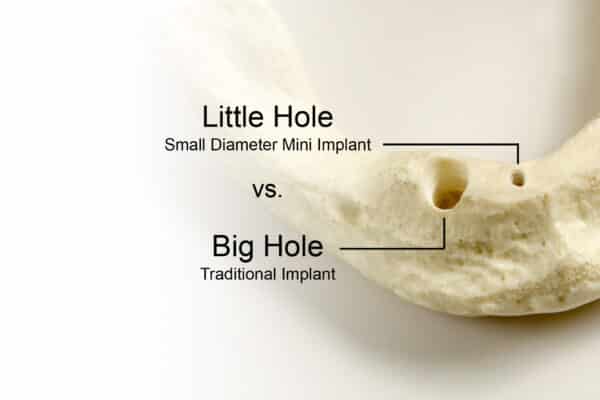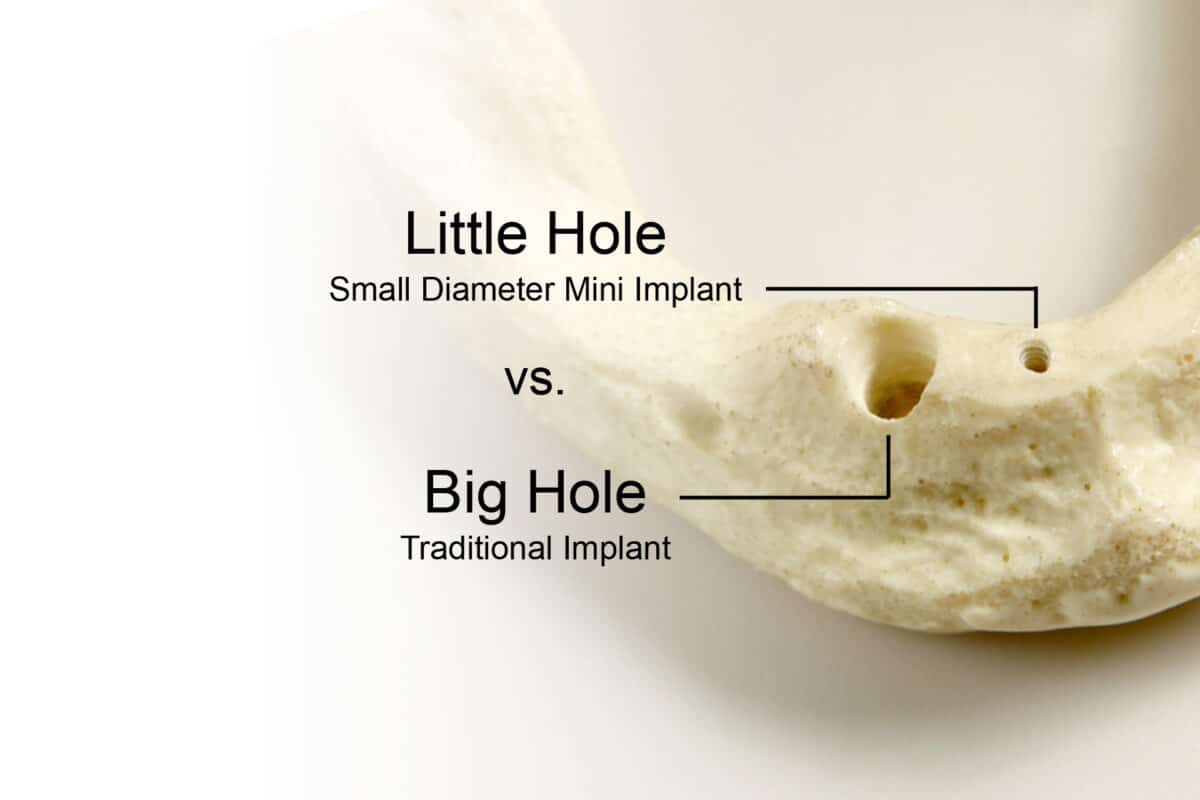The Surprising Truth Behind MINI-mally Invasive One-Piece Implants
In my recent posts, I’ve taken a closer look at the significant benefits of one-piece, small diameter implants and also touched upon some of their limitations. In this installment, I aim to drill deeper into the term “mini” implant and explore its evolving significance in the field of dental implants.
 Historically, the term “mini” in the context of dental implants was associated predominantly with its size. It was used to differentiate the one-piece implant from its larger counterparts. Back in those days, most “mini” implants available in the market ranged from 1.8-2.2 mm in diameter, making them noticeably smaller compared to the traditional implants, which were usually 3.0 mm or more in diameter.
Historically, the term “mini” in the context of dental implants was associated predominantly with its size. It was used to differentiate the one-piece implant from its larger counterparts. Back in those days, most “mini” implants available in the market ranged from 1.8-2.2 mm in diameter, making them noticeably smaller compared to the traditional implants, which were usually 3.0 mm or more in diameter.
However, as with most things in the medical and dental field, advancements in technology and methodology have brought about considerable changes. Today’s one-piece dental implants now showcase a diverse array of shapes and sizes, expanding their range to between 2.0-5.0 mm in diameter. In light of these advancements, designating them solely as “mini” due to their diameter seems both outdated and reductive. Moreover, it inadvertently suggests that these implants might be a lesser, subpar option compared to the conventional implants. This perspective couldn’t be further from the truth. One-piece implants have consistently demonstrated high success rates and have firmly established their place in the toolkit of many dental professionals.
Given this context, it’s evident that there’s a need to redefine the term “mini” implant to resonate more with its present-day applications and strengths. Instead of merely indicating its size, I suggest we pivot towards a more meaningful and contemporary interpretation: from “small implant” to “MINI-mally invasive implant.” This new perspective aligns more closely with the attributes and advantages these implants offer in modern dental practices.
In the upcoming blog post, I’ll further explore this idea and shed light on why the shift in terminology not only makes sense but also adds more value to our understanding of dental implant innovations.
If you or someone you love is interested in learning more about the benefits of one-piece implants to replace missing teeth or stabilize loose dentures, schedule a free consultation with Dr. Charles Pearson and let his experience work for you.

